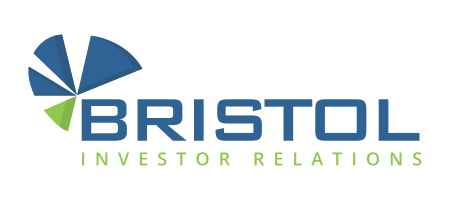Effective Investor Targeting
Effective Investor Targeting
Investor targeting is an important aspect of any investor relations programme for a publicly traded company but often a difficult one to map out. Difficult as in there are many moving parts to consider and to execute the ones that will derive the best results for your particular needs at a particular given time. This article will focus on four of the top main categories although plenty others exist.

Peer targeting
When looking to identify new stockholders to attract to your company’s stock the quickest is to identify relevant peers in your given industry and see who their top holdings are. This can further be segmented by geographic region or type of shareholder – institutional vs retail. It has been well established that there is a direct correlation between a stock’s trading characteristics and price by who holds that stock. At the start you would know your current holding breakdown and if you want to increase or decrease institutional vs retail holdings and this would inform who you would shortlist – all this plays into your current investor relations strategy and what you strive to achieve according to that. Also, to note is that a traditional retail owner has a different level of knowledge and sophistication to that of an institutional investor and would require different messaging and information given to explain the investment thesis.
Communications materials
“The single biggest illusion about communication is that it has taken place,” said George Bernard Shaw and has no truer words ever been uttered in the context of financial communications. Often in communications we mistakenly think that an investor deck or website has communicated the most important information. Everyone takes something different from reading information and that’s why its vital to articulate the key messages succinctly. Great storytelling is at the heart of every narrative and can truly make a company stand out and let investors know why its an exciting proposition to any investor to buy the stock. At the heart of messaging lies who is the addressable audience. Companies need to know what kind of stock they are – growth, value, income etc. and adapt the messaging and content to that audience and what they would want to hear to inform their decision making. Corporate and IR websites need to be aligned with communications materials. They should be easy to navigate (no more than 2 clicks to get to an answer), visually appealing and current in content. (for more on this please read “designing an investor relations website“) They should all be designed with the intention of grabbing the attention of analysts, investors and other stakeholders and informing them and getting them engaged in the story and news.
Culture and context
Culture and context is often overlooked when targeting investors. Thomas L Friedman was correct with the title of his book, “The World is Flat”, meaning that the world is increasingly a level playing field in terms of business where competitors have an equal opportunity no matter the geographic location as these are becoming increasingly irrelevant.
While this may be true for the world there are still slight differences in opinions and attitudes to risk, valuation and other factors. While Canada and the United States of America make up North America they are distinctly different and the same can be said for Europe, Asia, Latin America and Africa. It’s important to understand what drives your audience and what they are looking for, so you can address this head on in your communications and messaging to them. Failure to do this could result in our company being overlooked for investment due to something that was possibly within your control.
Governance
Corporate governance and its broader definition is an increasingly important topic for all companies no matter their market cap size. Institutions, asset managers and shareholders all have on their radars a host of topics they expect to hear about in more detail and if polices aren’t yet in place, then what are the steps that have been taken to get there and how long will it take. In certain countries governance issues have greater importance than others and the same can be said for certain topics that would be expected to be discussed or to have been considered by management. For instance, environmental, social, director independence and Board diversity, risk management, say on pay and women in leadership and Board positions are all very relevant and topics globally right now.
Blackrock, the world’s largest asset management with funds under management came out in September of last year against a handful of US and Canadian companies voting for eight proposals pushing for companies to adopt policies to boost their board’s diversity, of which is said a lack of diversity could hinder decision making. Blackrock’s own Board includes 17 members, for of whom are women. So, while this might only be talking place in certain geographic locations for now with certain funds and institutions, we should prepare for this to happen more frequently and amongst a larger audience.
Sources:
Trevor Hunnicutt
Thomas Friedman
IR Magazine
